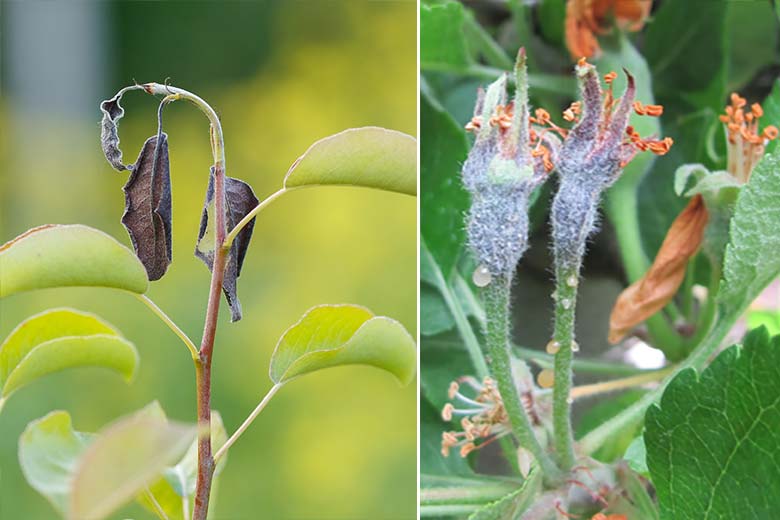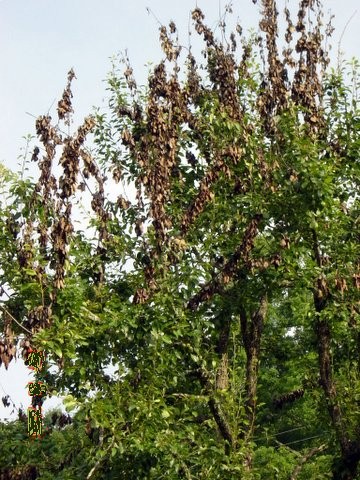
Contact information for each state's diagnostic laboratory for U.S. Please see our website for current forms, fees, and instructions on collecting and packing samples. The Iowa State University Plant & Insect Diagnostic Clinic can help you investigate and confirm if your plant has this disease.

Type of Sample Needed for Diagnosis and Confirmation Healthy plants may become infected through blossoms or wounds. In the springtime, sticky bacterial ooze formed at the edges of the cankers is carried to healthy plants by insects, wind, and splashing rain. The bacterium survives the winter in cankers on infected branches. Disease cycle of fire blightįire blight is caused by a bacterium Erwinia amylovora. During wet weather, bacteria may also ooze and later dry to a white residue in shoot, flower or fruit. Signs of fire blightĬankers and the blighted shoots may produce sticky ooze (signs) in wet weather. Cankers (areas of sunken or discolored bark) may develop on limbs, and the blighted shoots may produce sticky ooze (signs) in wet weather. The most characteristic symptom is the curling of affected shoots into curved "shepherd's crooks". Leaves on affected branches wilt and turn black, appearing as if scorched by fire.

Infected branches should be pruned to reduce impact.įire blight is a common springtime disease of apple, pear, and related species, including crabapple, hawthorn.Bacterial ooze is transmitted by insects, wind, and splashing rain to infect healthy plants.Affected leaves will blight and turn black and affected shoots will curl.The Shasta Master Gardeners Program can be reached by phone at 53 or email The gardener office is staffed by volunteers trained by the University of California to answer gardeners' questions using information based on scientific research. This will stop or slow the spread of the disease by pollinators when the tree starts flowering.

Next year, applying a late dormant spray of copper may also provide some sanitation and reduce disease levels going into bloom. More: Adopt me! Pets from North State rescues in May 2022 Don’t irrigate when trees are in bloom and keep weeds or cover crops mowed down to reduce humidity. There is not a lot we can do about warm temperatures during the spring, but you can try and control humidity. Make sure to make the summer cuts at least 12 to 18 inches below the canker as the sap is actively moving the bacterium around when the tree is leafed out.įire blight needs warm temperatures and moisture to infect the flowers of the tree. More: How do I report mountain lion sightings online? What about fishing resources for new anglers? CDFW mailbagįire blight can be cut out anytime you see it over the summer. This will greatly reduce the spread of the disease.

Remove any of the new growth that has died back or any flowers that are showing symptoms as soon as you notice wilting. If the tree is dormant this is not necessary as the pathogen is confined to the canker area. If pruning when dormant, you can prune closer to the canker margin, again cutting just above a node. Make sure to sterilize pruners between cuts. Make sure to cut a quarter inch above a node or side branch to keep the branch end from further die back. To control fire blight, start by pruning out any overwintering cankers at least six inches past where you see any discoloration to the branch. More: Why are my orange trees missing bark, oozing sap? If pruned, they may have reddish flecking on the edge of the canker and the branch will have black or purple streaks in the wood. They will be black, gray or violet in appearance. If fire blight is not treated from the year before, overwintering cankers can appear on branches. Leaves will not drop off these branches even after the shoot is brown or black this is a diagnostic symptom of fire blight. Later, tissues shrivel and turn brown to black. New growth may wilt rapidly and form a “shepherd’s crook”. Sometimes the leaves on the infected branch will show blackening along the veins of the leaves before the entire shoot turns brown. The leaves around the spent flower turn grayish green in appearance. Symptoms often appear one or two weeks after the plant is done blooming.


 0 kommentar(er)
0 kommentar(er)
